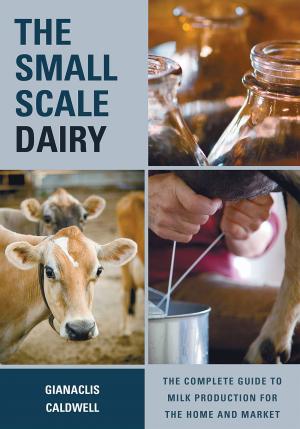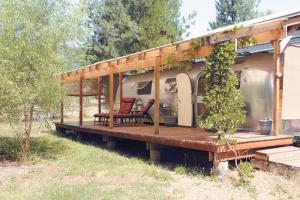2014 - Volume #38, Issue #3, Page #43
[ Sample Stories From This Issue | List of All Stories In This Issue | Print this story
| Read this issue]
She Created A New Career Right On The Farm
 |
 |
 |
Caldwell says the diversity of their farm-based business has allowed them to grow without expanding their goat herd too fast for the land they farm. She knows they could make more money by concentrating on making fresh chevre (a soft goat cheese), but she likes having something different to do every day.
The diversification didn’t just happen. After 20 years as a military family, her husband Vern retired from the Marines. They expanded their goat herd slowly, then built a small dairy and began to make cheese. Today Pholia Farm has 70 head of Nigerian Dwarf goats on 24 acres. They make aged, raw milk cheese with names like Brown’s Gulch, Hillis Peak and Elk Mountain.
The goats have been carefully bred for quality and productivity. “It means we need fewer, but it also makes them more valuable to others,” says Caldwell.
Vern has been a member of the state cheese board and is currently running for the national board. Gianaclis started writing a book, “The Farmstead Creamery Advisor”, a complete guide to building and running a small, farm-based cheese business (2010). Next came “Mastering Artisan Cheesemaking”, the ultimate guide for home scale and market producers (2012). Her latest book is “The Small Scale Dairy”, a complete guide to milk production for the home and market (2014).
Her blog tackles technical subjects and issues like testing for Listeria and somatic cell count limits, once-a-day milking, and details about cheesemaking. She shares information on everything from cheese mites that consume cheese rind to animal care and health, milk and milking to creamery design and business.
Their farm website covers a wide range of topics. It even offers detailed instructions for building a Nigerian Dwarf goat-sized milking stand out of pvc pipe.
“When we started our dairy, we turned to the internet and a couple of books on developing business plans for small farms,” recalls Caldwell. “For our situation, advice just wasn’t there. I want to share what we have learned.”
Things she says she has learned include:
• Have a business plan, but be open to change
• No matter how well you plan, expect some poor decisions
• Every situation is unique; you can’t anticipate everything
• Evaluate current and growing markets and find the niche where you want to spend your life, whether it’s farmers markets, retail or other
Caldwell says the business plan she and her husband started with was spot on in some areas, but way off in others. Mistakes made include using concrete block for the dairy building because she always wanted one like it when she was growing up.
“It wasn’t the best choice,” she says.
She also recalls ordering and planting 500 forage willows in an attempt to produce browse for the goat herd. The fact that none survived was one mistake. Another was realizing that since they were willows, she could have bought one and planted more from cuttings.
Adding a Farmstay Experience was a major change and diversification. The Caldwells installed a refurbished 1970 Airstream Land Yacht on the farm. Like other aspects of Pholia Farm, it does more than simply add another income stream for the farm
“We like to see people come and stay, and stay longer, not just for our benefit, but for the community,” says Caldwell. “It puts money into the local economy. We encourage them to eat at local restaurants and spend time in the area. Urban people need the rural connection, and they help us to not lose sight of what we have.”
Contact: FARM SHOW Followup, Pholia Farm, 9115 W. Evans Creek Rd., Rogue River, Ore. 97537 (ph 541-582-8883; gianaclis@gmail.com; www.pholiafarm.com; gianacliscaldwell.wordpress.com).
Caldwell’s book can be ordered at Chelsea Green Publishing (ph 800-639-4099; www.chelseagreen.com).

Click here to download page story appeared in.

Click here to read entire issue
To read the rest of this story, download this issue below or click here to register with your account number.




